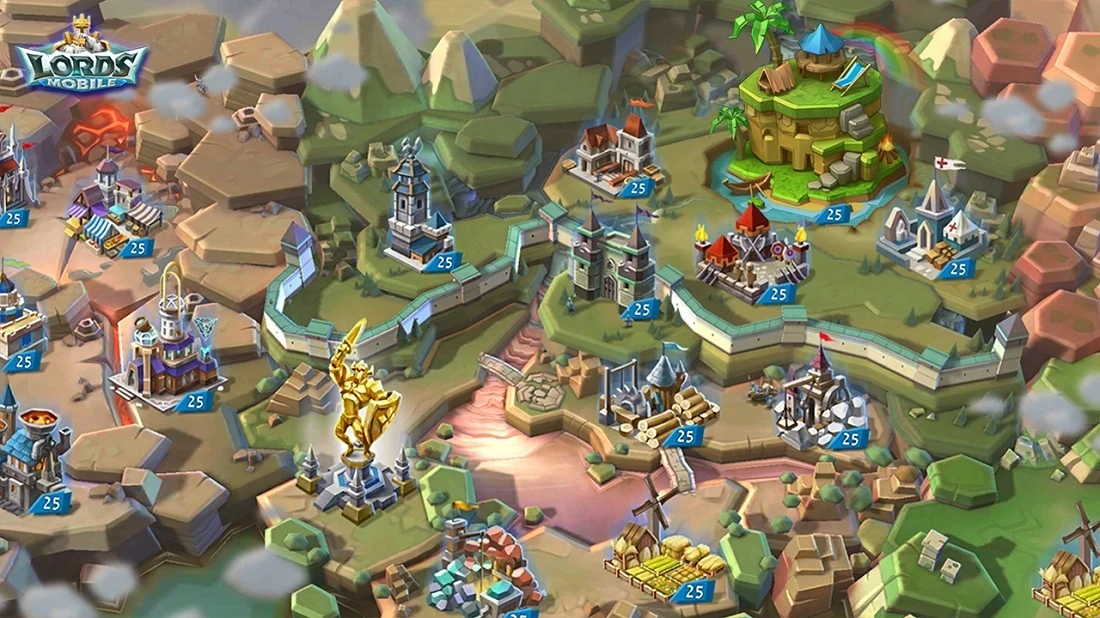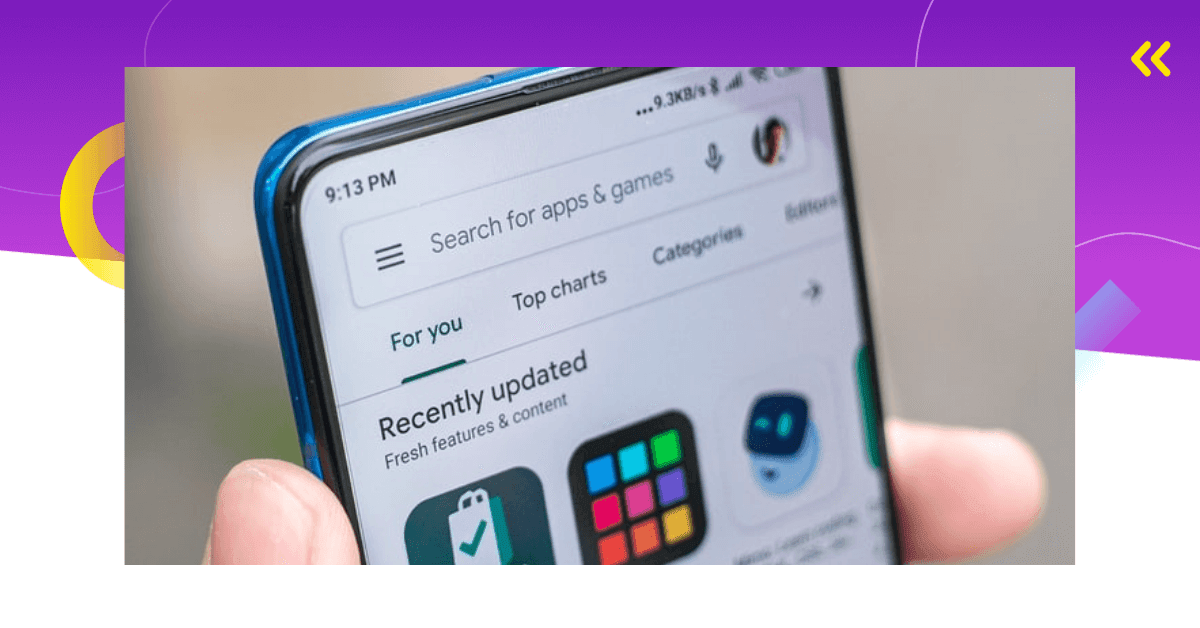Imagine you’re in a bowling alley, holding a bowling ball, about to aim at the pins. Your goal is to knock down all the pins with a single roll of the ball. Well, targeting is similar. Imagine the pins as your target audience, while the bowling ball represents ads. The better you aim the ball (ads/targeting), the better the results will be (user acquisition).
If your target audience is not defined, you’re shooting in the dark. Targeting and a defined target audience are the key to success in all of your marketing efforts. Everything should revolve around the user, and knowing who they are will help you accomplish that.
If you have a clearly defined target group, you’ll have a much clearer idea of how, where, and when to reach it. You can start very generally with categories like millennials, but you’ll achieve the best results when you figure out the details.
Don’t be afraid to be very specific. People who are not in your target audience can still buy from you, but they should not be your top focus, since they’re not the user around whom you want to model your marketing strategy.
Restrain your feelings and intuition and rely on data and research. You probably won’t have your target audience defined to the smallest detail from the start. You’ll need to learn on the go, adapt, test, and repeat the process over and over again until you find out what works the best.
What Is Target Audience/Target Market?
A target audience consists of people who really want or need what you’re offering.
If you know what problem you’re solving or what innovation you’re offering, you’ll also know whom to target. Targeting these people means mean you’ll be able to put your product in front of the most relevant audience.
Start with figuring out who needs your product and focus on the problem that it solves.
Next, check out the competition. Whom are they targeting? Who has bought their product or service? Avoid making assumptions and rely on data. As you change, grow, and expand, your target audience will change too. Your target audience is dynamic, and it should often be rethought and redefined.
The Importance of Defining Target Audiences for Mobile Apps
Target audience is not only an advertising term.
If you’re creating a mobile app, its target audience is an integral part of the game’s development, design, and monetization process.
First, your app is here to solve this audience’s problem or simply entertain them. Next, you have to create app features this audience would like.
Advertising is the last step in the process. When you start advertising, you should already have insights into who your target audience is.
Based on your previous research, you should have a basic understanding of their demographics, favorite social media networks, interests, and other characteristics.
How to Define and Analyze Your Target Audience
To find out, we’ll have to go through a couple of questions:
- What are the details of your product, business, or service?
- What problem are you solving for the user?
- How will the user benefit from your product or service?
- How does your target audience usually spend their day?
- What is the typical age or gender of your target audience?
- Do your target users have children?
- What is their income and education status?
- What are your target audience’s interests?
6 Steps to a Successful Target Audience Analysis
1. Define an Audience
If you already have a product or a service, a great first step is to take a look at all those people who already purchased something from you. Once you have that figured out, you can see where you can expand.

Some of the data you should consider when defining your target audience:
- Age
Age is the most basic targeting option in every mobile ad network. But with this simple information, you can narrow your target audience significantly. For some products, however, you don’t have to be too specific.
If your product is, for example, an app aimed at young parents, the age of your target audience would be 25-35. Therefore, it would make no sense to target teenagers or seniors.
- Location
Where does your target audience live? Nowadays, we have the power to access and display ads in almost every corner of the world.
- Language
Don’t assume that everybody speaks English or your language, but also, not all users will speak the dominant language of the location you’re targeting.
- Spending Habits
How expensive is your product, and who can afford it? Is your app a subscription service or a paid app aimed at more affluent users? Or is it a free product?
- Interests
What are some other things your customers enjoy? How do they spend their day?
- Other
In what stage of life are they? Do they have kids? Are they in college? Maybe searching for a job? Retired?
2. Create User Personas
If you want to visualize your target audience, you can create user persona profiles.
They represent accurate descriptions of your ideal users. In order to create these profiles, you need to analyze all the information you have collected about your potential users.
You should determine your user personas before you take any significant steps with your app. Especially when it comes to choosing a target audience for your ad campaigns.
Some apps attract completely different buying personas, while others have a more homogenous audience.
Let’s exemplify this with a popular puzzle mobile game – Candy Crush Saga. This game is played by all sorts of users, from teenagers to college students and 40-year-old moms. All of these groups represent the game’s different user personas. Most importantly, none is less valuable than another. If an app attracts many different groups of users, it should aim to reach and retain all of them.
On the other hand, some apps and games have not-so-diverse user personas. For example, a popular simulation game, Design Home. The majority of its players are women (77%), and their average age is 31. Therefore, this publisher doesn’t have to think a lot about which groups of users to target.
3. Analytics
If you don’t have a vast audience of people who have already downloaded your app, purchased your product, or used your service, you can look at your previous product’s performance or social media.
How did your previous app perform? Who is your audience on Facebook or Instagram?
For example, you can use Facebook Audience Insights to get in-depth information about your app’s target audience. This valuable source of information includes:
- Demographics (age, gender, education level, relationship status, job, etc.)
- Page likes in various categories (e.g., music, fashion)
- Where they live and the languages they speak
- Facebook usage frequency and devices
- Purchase behavior
This might seem like a lot of private information, but according to Facebook, all of it is “aggregated and anonymous” information.
Generally, mobile app analytics help us learn how users engage with our products and campaigns so we can make them better. In the end, knowing the behavior of your existing users is crucial for the success of your app.
If you’re wondering which mobile app analytics is the best fit for your app, check out this article – Top 11 Mobile App Analytics Platforms.
4. Competition Research
After you’ve researched who is using your product and who is following you on social media, it’s time to see what your odds are odds against the competition.
Are your competitors going after the same audience you are? What kind of ads are they using? How do they position themselves?
You won’t get an insight into their Facebook Ads Manager, but you can check them out in the Facebook Ad Library.

With the increased level of Facebook transparency and the “Why am I seeing this” feature, you can now find out how the brand got your contact information or why you see a specific ad.
You can also see whom the advertiser has targeted with the ad. In Facebook Ad Library, you can see all the active ads for a particular page. It gives you an insight into the best practices of your competition.
5. Have a Clear Value of Your Product or Service
Knowing your product well is the key to understanding what makes you different from the competition. A long list of features will only bore your future users.
Features only describe your product. But explaining the benefits explains what the results are. How does your product make someone’s life easier, better, more interesting?
If you don’t have a list of benefits of your product, start brainstorming.
Let’s take a look at the Runtastic fitness app. How is this app different from other fitness apps?
They’re targeting busy, young users trying to stay fit. Their first line is “only 15 minutes”, which points out one of the app’s main benefits. By using this app, users save time needed for going to and back from the gym.
Since the target audience of the Runtastic app is clearly pretty busy, their goal was to present the app as something that will offer them more in a limited time frame.
6. Explore Ad Networks’ Targeting Options
Facebook is traditionally the ad network with the best targeting options, so let’s dive into its possibilities.
When it comes to general target audiences on Facebook, you can choose from three options for core, custom, and lookalike audiences. If you want to reach a new audience with core audiences, you have the following targeting options:
- Location
- Demographics
- Interests
- Behavior
- Connections
Now let’s dive into what Facebook offers specifically for mobile marketers: App ad campaigns. When creating this type of campaign, you can choose between two objectives: driving app installs or app engagement.
Let’s say you want to use Facebook to retarget and engage your existing app users – you can create a custom audience. With this targeting option, your ads can be delivered to people who have:
- Already used your app
- Completed a session in your app
- Completed an in-app action
For example, a gaming app could target users who reached a certain level or even made an in-app purchase.
All of these options, along with different ad formats, have made Facebook a so-called king of retargeting.
Of course, all ad networks have some special features of their own, so make sure to check which one offers the best targeting options for your app type. When it comes to social media channels, pay special attention to what your target audience might be using the most.
7. Test Your Ads
After you’ve done the research, you can start creating ads on mobile ad networks. When choosing the channels to distribute your ads, you should also have your target audience in mind.
Demographics of ad networks vary greatly. Snapchat could be a great choice for a hyper-casual game, while Facebook could be better for a navigation app.
When you’ve decided on an ad platform, you can experiment with targeting. Each ad network has different options, and the processes slightly vary, but all of them have the same general categories, such as age, location, language, etc.
Don’t start big.
First, launch a low-budget ad campaign. Doing this helps app publishers to acquire small user groups and analyze their lifetime values. You can then define which group is the most valuable one for your app based on this data.
After that, track the success of your campaigns with mobile app analytics and attribution platforms.
8. Start Again
If you’ve completed all steps above, you could be jumping with joy and might be thinking that your job is over.
But this is one job that never stops. As your app, service, or product changes, so does your target audience.
From time to time, you’ll need to revisit your target audience research results and make sure they still apply.
Your target audience changes over time, and that’s completely normal. To achieve the best results, you need to stay on top of the changes.
To Sum Up:
If you’re still reading, you probably have a much clearer idea of how to conduct target audience research and why it is so important. Narrowing down the specific group of people you want to show your ads to will enable you to position them in front of the most relevant audience.
Research. Listen to your audience and users. Know their problems. Find out what they like about your product and what problem does it solve for them. Don’t forget to test out what you’re doing and collect the data with analytics.








Comments